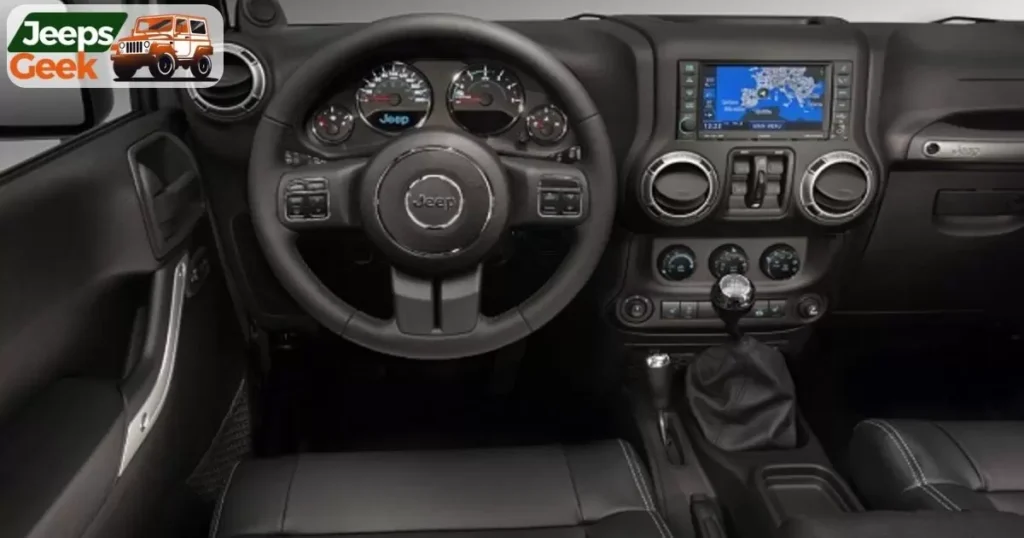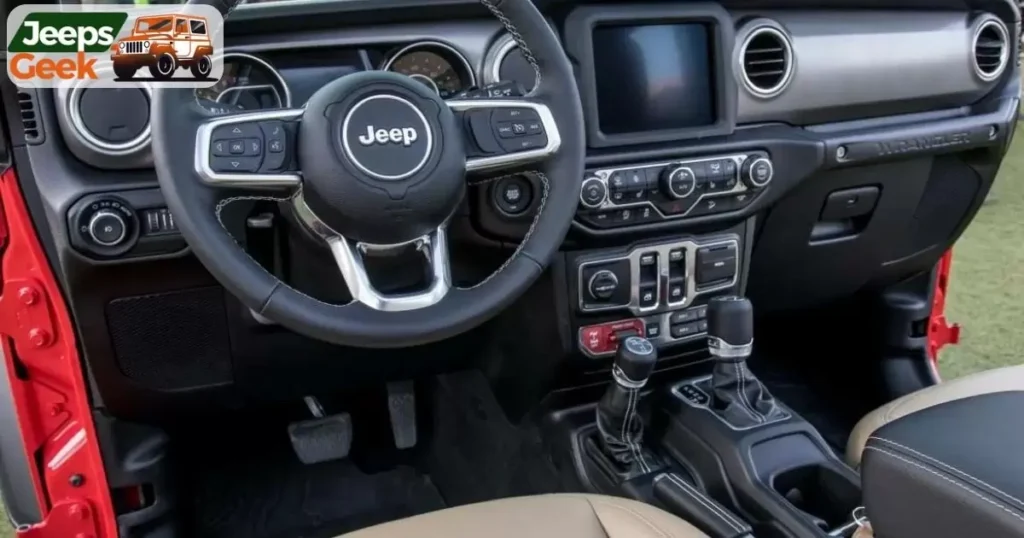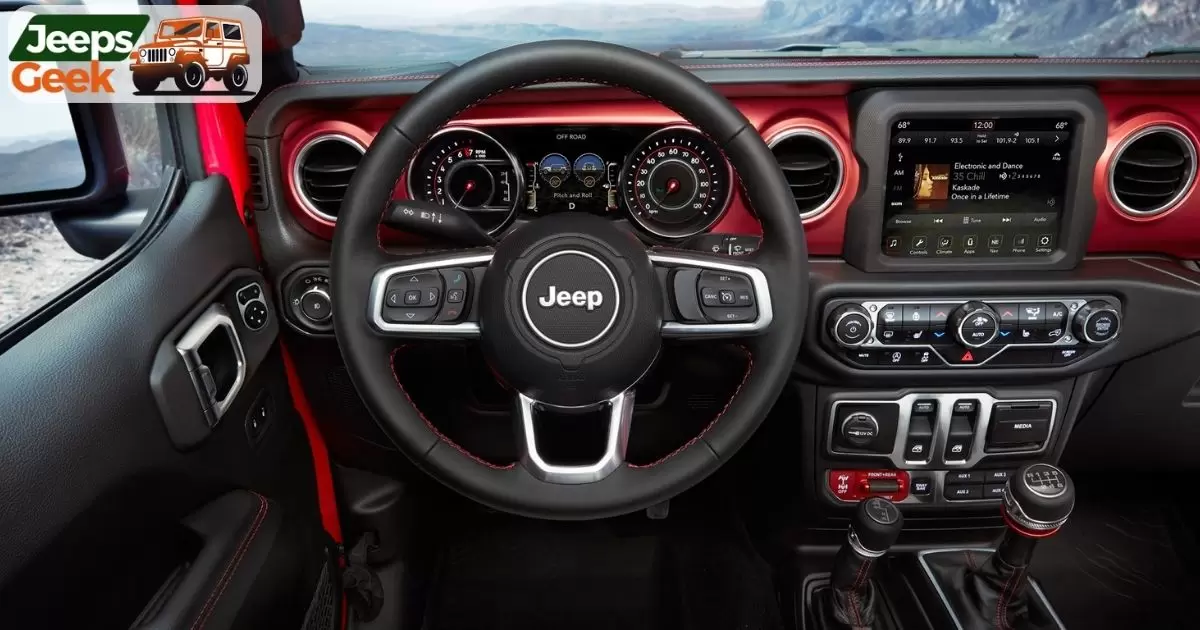Like many other car brands, Jeep has recently added some cool tech to its vehicles – the ACC/FCW systems. These systems are pretty awesome and helpful, but sometimes they might act up. If that happens, your display might show a message saying “ACC FCW Limited Functionality.”
Fixing this “ACC/FCW Limited Functionality” thing is not rocket science. First things first, give the ACC/FCW system a little reset. After that, clean your windshield, front camera, and ACC/FCW sensors well. It’s also essential to ensure everything is aligned right and the connections are solid. Don’t forget to calibrate the camera – it’s a game-changer.
In this article, we’ll look at common issues and spill the beans on how to get your ACC/FCW system back in action. If you want the details, just stick around and read the whole article.
What Are ACC and FCW?
Adaptive Cruise Control (ACC) is an intelligent feature that automatically adjusts a vehicle’s speed to maintain a safe following distance from the car ahead. On the other hand, a Forward Collision Warning (FCW) is a system that alerts the driver of an impending collision, allowing for timely intervention.
Meet ACC and FCW, the dynamic duo in your Jeep’s toolkit! Adaptive Cruise Control (ACC) and Forward Collision Warning (FCW) team up to make your drives safer and smoother. These incredible features are like your car’s superheroes, always looking out for you. They’re part of the Advanced Driver Assistance Systems (ADAS) package that often comes standard with Jeep vehicles. So, buckle up and enjoy the ride with your trusty sidekicks, ACC and FCW! 🚗✨
Adaptive Cruise Control (ACC)
Imagine driving and wanting to stay a safe distance from the car in front of you without consistently hitting the gas or brakes. That’s where Adaptive Cruise Control (ACC) comes in handy! ACC automatically changes your car’s speed to keep that safe gap.
It’s like having an intelligent driving buddy that helps you maintain your speed on highways or open roads without constantly speeding up or slowing down.
How does it work? ACC uses excellent sensors to determine how fast other cars are going and how far they are from you. So, if the vehicle in front slows down, your car slows down too – all thanks to ACC doing its thing automatically. Easy, right?
Read also: Should You Use Sky One Touch Power Top In Winter? How To Maintain?
Forward Collision Warning (FCW)
A Forward Collision Warning (FCW) is like your car’s superhero lookout. It keeps a close eye on the vehicle in front of you and lets you know if it senses a possible crash coming up.
Now, FCW doesn’t stop there; it’s also buddies with automatic emergency braking (AEB). Think of it like this: if FCW sees trouble, it quickly tells the car to start braking automatically.
The cool thing about FCW is that it gives you a heads-up before a crash might happen. This alert buys you extra time to react or lessens how hard the car brakes in an emergency. So, it’s like a safety net to reduce injuries if something goes wrong.
But here’s the deal: if FCW isn’t working right, it throws a warning sign saying “ACC FCW Limited Functionality.” That’s your car’s way of saying, “Hey, something’s up with the superhero system; better check it out!”
Read also: Can You Add Remote Proximity Keyless Entry To A Jeep?
Pros and Cons of ACC FCW Limited Functionality
Adaptive Cruise Control (ACC) and Forward Collision Warning (FCW) systems may occasionally present limitations drivers should be aware of. Let’s explore the pros and cons of ACC FCW Limited Functionality.
Pros:
- Safety Enhancement: The primary purpose of ACC FCW systems is to enhance safety by assisting drivers in maintaining a safe following distance and providing timely collision warnings.
- Preventive Measures: The “Limited Functionality” warning serves as a preventative measure, alerting drivers to potential issues before they escalate and allowing for proactive resolution.
- Customized Settings: Some systems allow users to customize settings, tailoring the ACC FCW functionality to their driving preferences and comfort levels.
Cons:
- Environmental Sensitivity: ACC FCW systems can be sensitive to environmental conditions, such as heavy rain, snow, or dirt, leading to limited functionality warnings when sensors are obstructed.
- False Warnings: The systems may trigger warnings in scenarios without actual danger, leading to potential driver frustration and distraction.
- Dependency on Technology: Drivers may become overly reliant on ACC FCW systems, potentially reducing their attentiveness and responsiveness on the road.
- Post-Collision Challenges: After a collision, the sensors and cameras integral to ACC FCW functionality may become damaged, affecting their performance and triggering warning signals.
What Causes the “ACC FCW Limited Functionality” Warning?

When you spot “ACC/FCW limited functionality” on your screen, it doesn’t always mean your car has a severe issue. Sometimes, it’s just a glitch, like when your computer acts up. If it’s not an electrical hiccup causing the problem, there are a few other reasons why your ACC/FCW might not work as it should. Let’s break it down.
Blocked Sensor Due to Heavy Rain, Snow, or Dirt
One common reason for the “ACC FCW Limited Functionality” warning is the obstruction of sensors by environmental factors such as heavy rain, snow, or dirt. These elements can interfere with the sensors’ ability to detect the surrounding environment accurately.
In callous weather conditions, like when it’s pouring rain, snowing heavily, foggy, or super cold, your car’s ACC/FCW systems might take a break. Why? Because the bad weather can make it hard for the sensors to see other vehicles like they’re temporarily blinded.
You know what makes it even trickier? If those sensors get dirty, like covered in mud or dust. That can block the sensors’ view and lead to an “ACC FCW Limited Functionality” warning on your dash. So, when the weather gets wild or your sensors need a good cleaning, your car might give you a heads-up!
Misaligned Camera Behind the Mirror on the Windshield
If the camera positioned behind the rearview mirror on the windshield is misaligned, it can lead to inaccurate readings and trigger the warning. Proper calibration of this camera is crucial for optimal system performance.
When your windshield gets replaced, sometimes the camera behind the rearview mirror can end up out of whack, causing that warning message to pop up on your screen. The camera isn’t seeing things straight, so you’re getting the heads-up on your dashboard. It’s a common thing that happens during windshield changes.
The Wiring System in the Lower Grill Is Faulty
A faulty wiring system in the lower grill, where some sensors are typically located, can disrupt the communication between components. It can result in limited functionality warnings and compromise the effectiveness of ACC and FCW.
If there’s something wrong with the wires in the lower grill of your car, you might see a message saying “ACC FCW Limited Functionality.” It could mean there’s a short circuit in the wires. If the sensors are damaged, they might send alerts to let you know something’s not right.
Incorrect Camera Settings
Sometimes, the warning may stem from incorrect camera settings. Ensuring that the cameras are calibrated and configured correctly is essential for the accurate functioning of ACC and FCW.
When the camera or sensor in your car gets messed up, it can mess with your ACC/FCW systems, and you’ll see a message like “ACC/FCW Limited Functionality Front Camera Service Required” pop up on your screen.
Fixing these camera problems can be pretty pricey – some folks say they had to cough up at least $1,800 to get their ACC/FCW system back in shape!
Inadequate Lighting
Insufficient lighting conditions, such as driving during dusk or dawn, can impact the systems’ ability to function optimally. Adequate lighting is crucial for the sensors and cameras to perceive the road environment accurately.
The brightness of the road affects how well ACC/FCW systems work. When it’s dark, the sensors might not see other cars correctly. So, if you’re driving at night, make sure to use your headlights and other lights to see well.
Driving Through Areas With Many Reflective Surfaces
Areas with numerous reflective surfaces, like glass buildings or shiny road signs, may confuse the sensors. This confusion can lead to false readings and trigger warnings, urging drivers to exercise caution.
Driving in places with lots of shiny surfaces, like tunnels or reflective roads, can mess with how well your car’s ACC/FCW systems work. That’s because the reflections can kind of blind the sensors for a bit, making them not work the way they’re supposed to.
Damaged Sensors/Cameras After Collision
In the unfortunate event of a collision, sensors and cameras can sustain damage, affecting their performance. Regular post-collision inspections are essential to identify and address any issues promptly.
If your car has been in a crash, the sensors and cameras might not work well or be broken. It often happens, especially in crashes at the front of the car. If so, you should take your car to a mechanic. They can check and repair any damage.
Faulty Battery
A weakened or faulty vehicle battery, including the ACC and FCW components, can impact the overall electrical system. A healthy battery is crucial for ensuring consistent and reliable performance.
If your ACC/FCW isn’t working right, it might be because of a bad car battery. Make sure your Jeep’s battery is doing well. Check if it’s healthy. If the battery is not good or weak, swapping it out for a new and working one might fix the issue.
read also: Stop Safely Vehicle Will Shut Off Soon
Software Bug
Occasionally, a software bug in the ACC and FCW system may be the culprit behind the warning. Manufacturers often release updates to address such issues and enhance system functionality.
The ACC/FCW systems sometimes act up because of a software issue or a not-so-great update. If that happens, take your car to the dealership. They can fix it and give your vehicle the proper software updates.
How Do You Fix the “ACC FCW Limited Functionality” Issue?
To make your ACC/FCW work better, try these simple fixes.
Reset the ACC/FCW System
If you see the message because of an electrical problem, try resetting the ACC or FCW system. Here’s what you can do:
- First, remove the vehicle’s battery. Take off the negative terminal first, then the positive one.
- Wait 15 to 20 minutes until the car’s power runs out.
- Reconnect the battery by adjusting the terminals correctly.
- Check on the dashboard, and the message should be gone.
But if the Look at the front camera problem isn’t electrical, don’t worry – keep reading for the front Windshield, Sensors, and Camera.
Regularly cleaning the front windshield, sensors, and cameras is essential to maintaining optimal functionality. Use a non-abrasive cleaner to ensure clarity without damaging the equipment.
Your car’s ACC FCW system might not work well mainly because of dirty sensors or windshields.
Here’s what you can do: if you try resetting the car, but the message doesn’t go away, check if there’s snow or dirt on the ACC or FCW sensors. If you find them dirty, give them a good clean.
Cleaning an FCW or ACC sensor using windshield washer fluid or wet glass wipes is easy. Just make sure the sensor, camera, and windshield are all clean. You don’t have to take anything apart; clean the surfaces that need it.
Best Way to Clean ACC/FCW Cameras and Sensors:
Grab a soft, lint-easy cloth – it’s your cleaning superhero! If some dirt or junk is hanging around, mixing vinegar or rubbing alcohol with water should do the trick.
Bring in a soft brush or some air pressure for those stubborn bits. Just avoid harsh stuff that could mess up your camera and sensor buddies. And remember, stick to what the manufacturer says when giving your cameras and sensors a spa day!
| Cleaning Component | Recommended Cleaning Method |
| Front Windshield | Use a high-quality glass cleaner for clarity. |
| Sensors and Cameras: | Gently wipe with a soft, lint-easy cloth. |
| Calibration Tools | Follow manufacturer guidelines for calibration. |
Calibrate the Front Camera Settings
Calculating the front camera settings is crucial for accurate readings. Consult the vehicle’s manual for step-by-step instructions on calibrating the camera to the recommended specifications.
Look at the front camera to see if your windshield, sensors, and camera are nice and clean. Sometimes, when the car needs to fix the front camera, it shows a message saying ACC/FCW has limited functionality.
If you spot this message, you should calibrate the front camera. But, if the camera isn’t calibrating, check for a problem with the electrical connection.
Ensure the wire is in the right place before calibrating it again. If it still doesn’t work, look at the dashboard; often, this means the front part of the car needs to be replaced.
How Serious Is the “ACC FCW Limited Functionality” Issue?
While the warning should not be ignored, it is often a precautionary measure indicating potential issues. However, addressing the problem is crucial to maintaining the effectiveness of ACC and FCW in preventing collisions.
If you rely on ACC/FCW to stay safe on the road, paying attention to this issue is essential. When ACC/FCW isn’t working well, there’s a higher chance of unexpected accidents, especially if something is blocking the road. These systems use sensors to check the road and warn you, but sometimes, they can’t work for specific reasons.
You can still drive even if you see the warning about ACC/FCW limited functionality. But remember that the system won’t fully break for you in this situation. It’s like a heads-up to be more careful when these features are not at their best.
Guidelines to Avoid the “ACC FCW Limited Functionality” Warning

Follow a few simple steps to steer clear of the “ACC FCW Limited Functionality” warning. Keep your cameras and sensors clean from dirt and dust so they can spot other cars accurately.
Also, keep an eye on the weather. Try not to drive in conditions that might give your ACC/FCW system a hard time. Use your headlights and other lights properly when it’s dark or foggy. Simple things like these can help you avoid those warning signals on your car.
Implementing a few guidelines can help minimize the occurrence of the warning:
- Regular Maintenance: Schedule routine maintenance checks to ensure all components are in optimal condition.
- Environmental Awareness: Be mindful of driving conditions, especially in heavy rain, snow, or low-light situations.
- Post-Collision Inspections: Conduct thorough inspections to identify and address potential damage to ACC and FCW components after collision.
- Battery Health: Monitor and maintain a healthy vehicle battery to support the electrical system’s functioning properly.
- Stay Informed: Stay updated on manufacturer recommendations and software updates to address any potential bugs or issues promptly.
Answers to Key Questions:
What are ACC and FCW?
- ACC stands for Adaptive Cruise Control, a system that adjusts your car’s speed to maintain a safe following distance.
- FCW stands for Forward Collision Warning, which alerts you if it senses a potential front-end collision.
What does ACC mean in a Jeep?
In a Jeep, ACC usually refers to Adaptive Cruise Control, a feature that automatically adjusts your Jeep’s speed to keep a safe distance from the vehicle in front.
What is an ACC warning light?
The ACC warning light is an indicator on your dashboard that alerts you to an issue or limitation in the Adaptive Cruise Control system. It signals that the system’s complete functionality may be restricted.
What is the ACC fault warning light?
The ACC fault warning light indicates a specific issue or fault in the Adaptive Cruise Control system. It signals that there’s a problem that needs attention or repair.
Is it safe to drive with an ACC light on?
It’s generally not recommended to move with the ACC light on. The light indicates a potential issue with the Adaptive Cruise Control system, and driving with it on may affect the system’s performance or lead to further problems. Addressing the issue and checking the system before continuing to navigate is advisable.
Final Words
Nowadays, many cars have these fancy ACC/FCW systems that can help make driving safer. They’re great at reducing the impact of a crash and even stopping accidents from happening.
But, you know, sometimes these systems don’t work as they should. Don’t worry too much if you ever see a warning about ACC FCW Limited Functionality. It just means there might be a little issue. Knowing why it happens can help you figure out what’s wrong and fix it.
So, if you see that warning, try out the tricks we mentioned earlier. Clean things up, reset the system, and make sure everything’s calibrated right. If all else fails, it might be time to let the car experts take a look. And, of course, always drive carefully and follow the rules to stay safe on the road.

Nicholas Clark at your service, blazing trails with “Jeeps Geek.” As a Jeep aficionado, I’m here to share my passion, troubleshoot any roadblocks, and guide you through the exhilarating world of Jeeps. Let’s hit the trails and make every Jeep adventure unforgettable.













